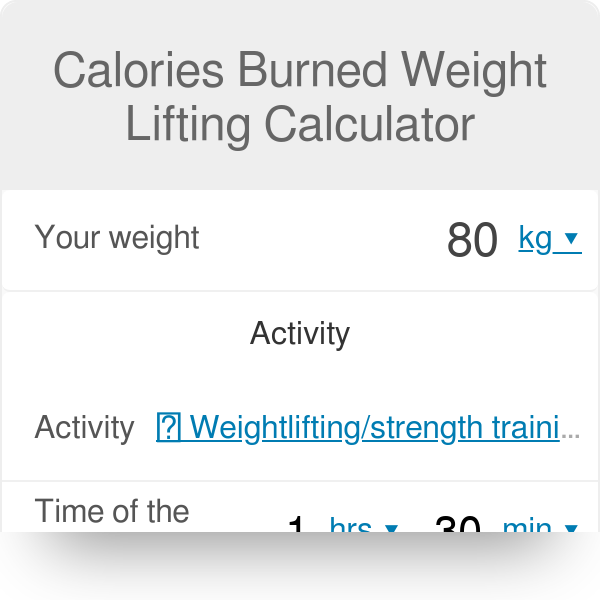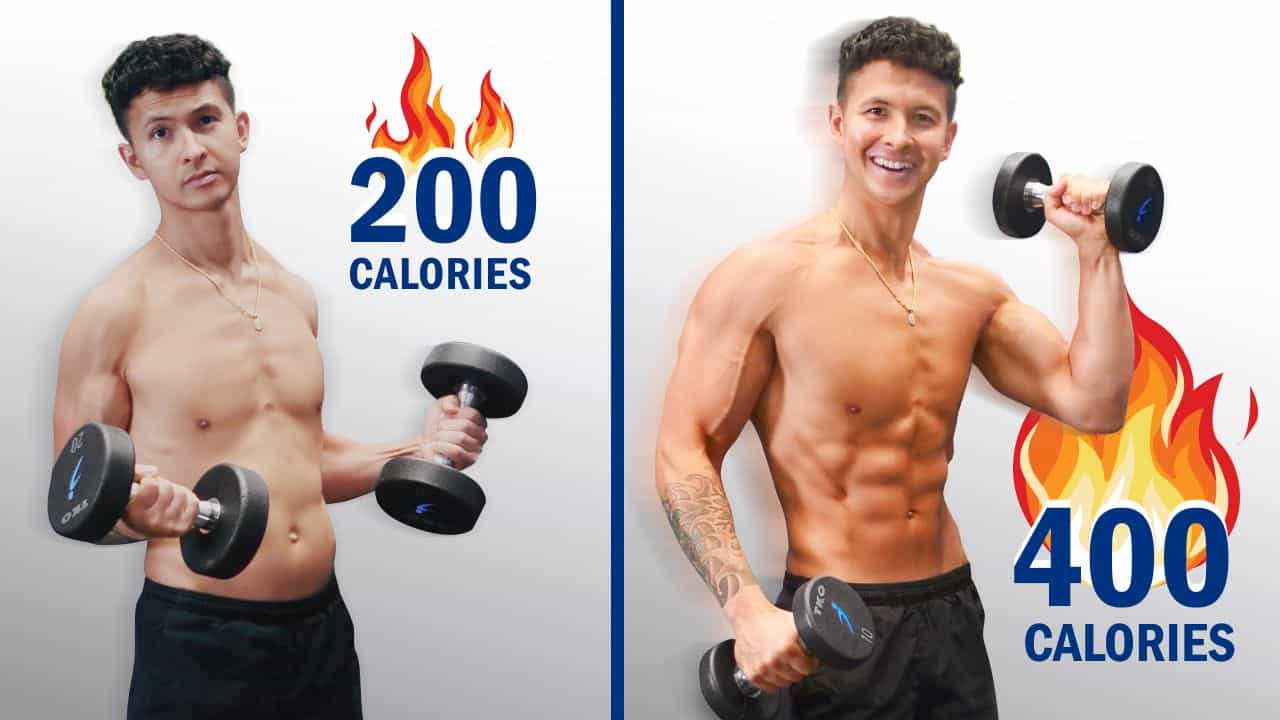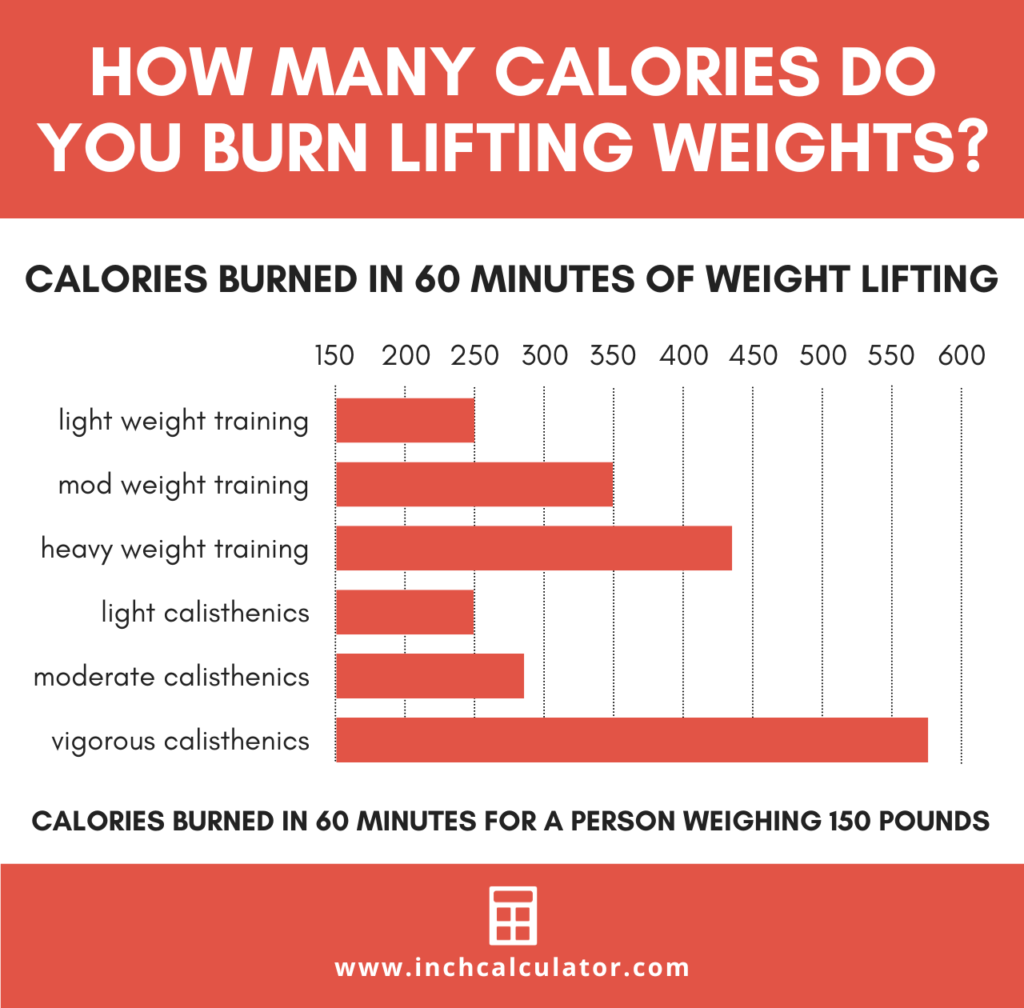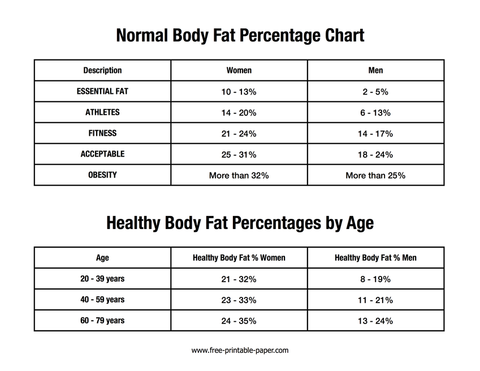Strength training burns calories by increasing muscle mass, which boosts metabolism. The exact number of calories burned varies based on intensity and duration.
Strength training is a powerful way to enhance physical fitness and overall health. It involves exercises that improve muscle strength and endurance. These exercises can include lifting weights, using resistance bands, or body-weight exercises like push-ups and squats. Building muscle not only improves strength but also increases the number of calories your body burns at rest.
This metabolic boost aids in weight management and fat loss. Strength training also promotes bone density, enhances joint flexibility, and improves cardiovascular health. Regular sessions can lead to significant improvements in body composition and energy levels, making it a crucial component of a balanced fitness routine.

Credit: www.omnicalculator.com
Caloric Dynamics In Strength Training
Strength training burns calories while building muscle, which increases your metabolism. Higher muscle mass leads to more calories burned even at rest.
Energy Expenditure Basics
Strength training burns calories during and after the workout. Muscles need energy to repair and grow. This process increases your resting metabolic rate. More muscle mass means more calories burned at rest. Strength training also helps in fat loss. It boosts metabolism, even when you are not exercising.
Strength Vs. Cardio: A Caloric Comparison
Cardio exercises often burn more calories per session. But strength training has a longer-lasting effect. Cardio burns calories mainly during the activity. Strength training burns calories for hours after the workout. Strength training builds muscle, which increases your metabolic rate. Cardio helps with heart health. Both types of exercise are important for a balanced fitness routine.
Factors Influencing Caloric Burn
Strength training burns calories based on intensity, duration, and individual metabolism. Muscle mass and workout frequency also play crucial roles. Efficient routines maximize caloric expenditure.
Muscle Groups Engaged
Large muscle groups burn more calories. Legs and back are the biggest groups. Engaging multiple groups increases caloric burn. Compound exercises are effective. Squats and deadlifts are great examples.
Intensity And Its Impact
Higher intensity means more calories burned. Lifting heavier weights helps. Shorter rest periods boost calorie burn. Pushing limits is key. Intensity keeps the body working hard.
Workout Duration And Frequency
Longer workouts burn more calories. Consistency is important. Training three to four times a week is effective. Balancing duration and frequency is crucial. Recovery time also matters.
Optimizing Your Workout For Maximum Burn
Choose compound exercises to burn more calories. These include squats, deadlifts, and bench presses. Isolation exercises target one muscle group. They burn fewer calories. Mix both types for balanced workouts.
Vary your sets and reps to keep your body guessing. High reps with low weight increase endurance. Low reps with high weight build strength. Both methods burn calories.
Include supersets and circuit training. These methods keep your heart rate up. They also maximize calorie burn during strength training.
Shorten your rest periods between sets. Resting for 30-60 seconds keeps your heart rate elevated. This increases the caloric expenditure. Longer rest periods allow for more recovery but burn fewer calories.
Compound Movements And Caloric Output
Compound exercises engage multiple muscle groups. This leads to higher caloric output. They improve overall strength and coordination. These exercises also enhance functional fitness. They save time by working multiple muscles at once. Including them in workouts boosts metabolism. This helps in burning calories even after workouts.
| Exercise | Muscle Groups Worked |
|---|---|
| Squats | Legs, Glutes, Core |
| Deadlifts | Back, Legs, Core |
| Bench Press | Chest, Shoulders, Triceps |
| Pull-ups | Back, Biceps, Core |
| Overhead Press | Shoulders, Triceps, Core |
High-intensity Strength Protocols
Circuit training combines multiple exercises. Each exercise targets different muscle groups. It keeps your heart rate high. This method burns a lot of calories. You move quickly from one exercise to the next. Rest periods are very short. This makes the workout intense and effective.
Supersets involve doing two exercises back-to-back. There is no rest in between. This helps build muscle and burn calories fast. Dropsets are different. You start with a heavy weight. Then, you reduce the weight and continue the set. Both methods push your muscles hard. They are great for burning calories.
Pyramid training changes weights and reps. You start with light weights and high reps. Then you increase the weight and lower the reps. This continues until you reach a heavy weight. After that, you reverse the pattern. This method challenges your muscles in different ways. It helps in burning more calories.

Credit: builtwithscience.com
Nutrition’s Role In Strength Training
Eating the right food before a workout is important. Carbohydrates give you energy. Proteins help build muscle. A small meal or snack is best. Bananas, oats, and yogurt are good choices. Stay hydrated with water.
After a workout, your body needs fuel to recover. Proteins help repair muscles. Carbohydrates restore energy. Chocolate milk, chicken, and rice are great. Drinking water or sports drinks keeps you hydrated.
Eating balanced meals is key. Include proteins, carbohydrates, and healthy fats. Fruits and vegetables provide vitamins and minerals. Avoid junk food and sugary drinks. Drink plenty of water every day.
Monitoring Your Progress
Keep a log of your workouts. Write down the exercises you do. Note the weights you lift. Record the sets and reps. This helps you see your progress. It shows you how much stronger you get.
Use a scale to check your weight. Measure your waist, hips, and arms. Take photos of your body. Do this every week. Compare the results. See how your body changes over time.
Sometimes progress slows down. Change your workout routine. Add new exercises. Increase the weight you lift. This helps your body keep improving. Stay motivated and keep pushing yourself.
Credit: www.quora.com
Safety And Injury Prevention
Using proper form and technique is crucial during strength training. It helps prevent injuries and maximizes effectiveness. Always warm up before starting. Warm muscles are less likely to get hurt. Focus on body alignment and controlled movements. If unsure about form, ask a trainer for help. Never rush through exercises. Slow and steady movements are best.
Balance work and rest to avoid overtraining. Muscles need time to recover and grow. Rest days are just as important as workout days. Overworking muscles can lead to injuries. Plan rest days into your workout schedule. Listen to your body. If feeling too tired, take a break.
Common injuries include sprains, strains, and tendinitis. If injured, stop the activity causing pain. Apply ice to reduce swelling. Rest the affected area. If pain persists, see a doctor. Always stretch after workouts to keep muscles flexible. Use protective gear if needed. Proper footwear can also prevent injuries.
Supplemental Strategies To Enhance Caloric Burn
Cardio acceleration involves short bursts of cardio between strength sets. This keeps the heart rate high. It helps burn more calories quickly. Jumping jacks, burpees, or high knees work well. Cardio acceleration also reduces rest time.
Thermogenic aids boost metabolism. They help the body burn more calories. Common aids include caffeine and green tea extract. Always consult a doctor before using supplements. Some people may experience side effects.
Active recovery sessions involve low-intensity activities. These can be walking, yoga, or light stretching. Active recovery helps muscles heal while burning calories. It also keeps the body moving and active. These sessions are less intense but still beneficial.
Realistic Expectations And Long-term Success
Setting small goals helps you stay motivated. Short-term goals are easier to achieve. They lead to long-term success. Aim for goals you can measure. For example, lift 5 pounds more. This keeps you on track.
Consistency is key to success. Regular workouts matter more than intense ones. Train at least three times a week. This builds a strong habit. You will see better results over time.
Success is not only about weight loss. Look at other improvements. Notice how your clothes fit better. Feel stronger and more energetic. Celebrate these wins. They show your hard work is paying off.
Frequently Asked Questions
How Many Calories Does Strength Training Burn?
Strength training burns approximately 180-266 calories per hour, depending on intensity and individual factors like weight and muscle mass.
How Do You Calculate Calories For Strength Training?
To calculate calories for strength training, track workout duration, intensity, and body weight. Use fitness calculators or apps for accuracy.
Can You Burn 500 Calories Strength Training?
Yes, you can burn 500 calories strength training. Duration, intensity, and individual factors affect the calorie burn rate.
How Many Calories Should You Burn During Functional Strength Training?
Burning 200-400 calories per 30-minute session is typical for functional strength training. Individual results vary based on intensity and body weight.
How Many Calories Burned Strength Training?
Strength training burns 180-266 calories per 30 minutes, depending on intensity and body weight.
Does Strength Training Burn Fat?
Yes, strength training increases muscle mass, boosts metabolism, and helps burn fat effectively.
How To Maximize Calories Burned Strength Training?
Increase intensity, use compound movements, and reduce rest periods to maximize calorie burn during strength training.
Is Strength Training Effective For Weight Loss?
Strength training is very effective for weight loss by building muscle and increasing metabolic rate.
How Often Should You Strength Train?
Train at least 2-3 times per week for optimal results in strength and calorie burning.
What Affects Calories Burned Strength Training?
Factors include workout intensity, duration, type of exercises, and individual body weight.
Conclusion
Strength training burns calories and builds muscle. It boosts metabolism and enhances overall fitness. Regular workouts lead to better health and increased energy. Embrace strength training to achieve your fitness goals and enjoy long-term benefits. Start today and experience the positive changes in your body and mind.











